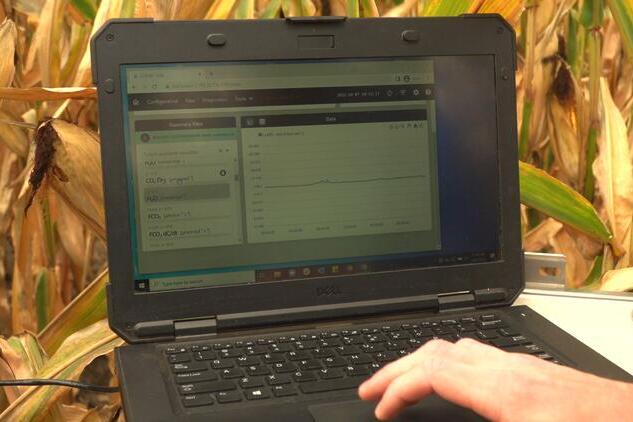ASC announces N2Onet to track nitrous oxide emissions from agricultural systems

Due to its status as a long-lived greenhouse gas, controlling the emission of nitrous oxide (N2O) is recognized as a core component of climate change mitigation. This gas largely comes from nitrogen fertilizer applied to soil in agricultural regions. An international team led by the Agroecosystem Sustainability Center (ASC) at the University of Illinois Urbana-Champaign is developing an initiative to better track and understand these emissions. This is the foundation to formulate better ways to reduce soil nitrous oxide emissions and verify those reductions. ASC convened this group of international leaders in soil nitrous oxide research on Jan. 17-19 in Chicago to develop a consensus vision for this new initiative and strategize about next steps.
At the heart of the plan is an observational data network called N2Onet, which will accelerate the progress toward fully understanding the drivers of soil N2O emissions and improving model predictions of those emissions. The three-day workshop helped articulate the challenges currently hindering this progress and how this network could be designed to help overcome those challenges.
Fertilizer plays a critical role in high crop production, which in turn helps feed a growing world population. Climate-smart practices aim to maintain or even increase the productivity of agricultural lands while reducing the rate of greenhouse gas accumulation in the atmosphere. Current practices such as reduced tillage and cover cropping may increase carbon uptake and storage in agricultural systems, but could unintentionally stimulate soil N2O emissions, which would counter those climate mitigation outcomes.
Knowledge of N2O emissions is currently limited due to a lack of high spatiotemporal resolution data on emissions and their potential drivers in the environment. The most commonly used emissions measuring tool relies on a manual chamber-based approach that limits the spatial and temporal extent of sampling, likely not capturing some areas that disproportionately contribute to field-scale emissions and episodic, short-lived emission pulses that can account for over half of annual emissions. This can lead to inaccurate prediction and evaluation of how agricultural practices affect emissions.
N2Onet strives to fill in those gaps by bringing together data that can lead to transformative research in this area, akin to what the Ameriflux Network is doing for carbon cycling. A novel aspect of the network will be the synthesis of data across spatial scales, developing new measurement protocols and sites, to simultaneously support breakthroughs in process-based understanding of emissions, greenhouse gas accounting, and modeling of emissions.
“I was excited to see convergence in ideas about what is needed in an observational network to accelerate the knowledge advances needed to effectively measure, model, and mitigate agricultural soil emissions of this potent greenhouse gas,” said Wendy Yang, ASC Associate Director and Professor of Plant Biology at Illinois. “The workshop successfully built momentum behind this initiative to bring together N2O researchers and their data from around the world, and ASC will continue to play a leading role in this effort.”
The N2Onet organizing committee include ASC scientists Yang, Evan DeLucia, and Kaiyu Guan, and Claudia Wagner-Riddle from University of Guelph.